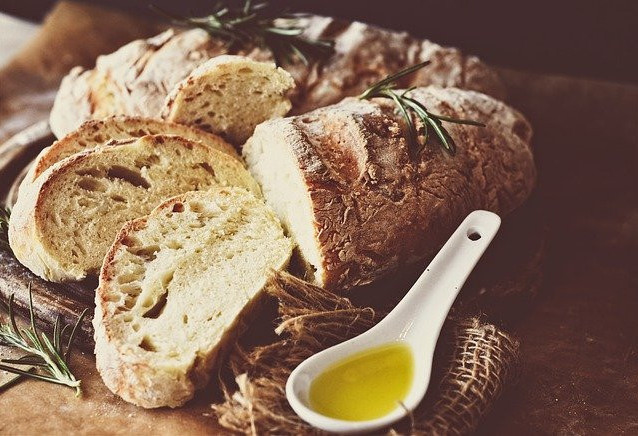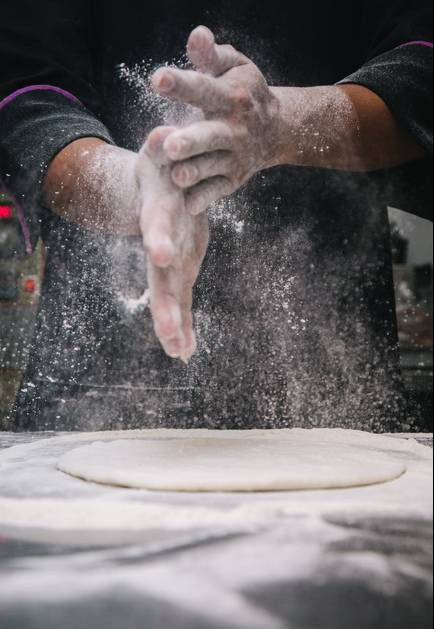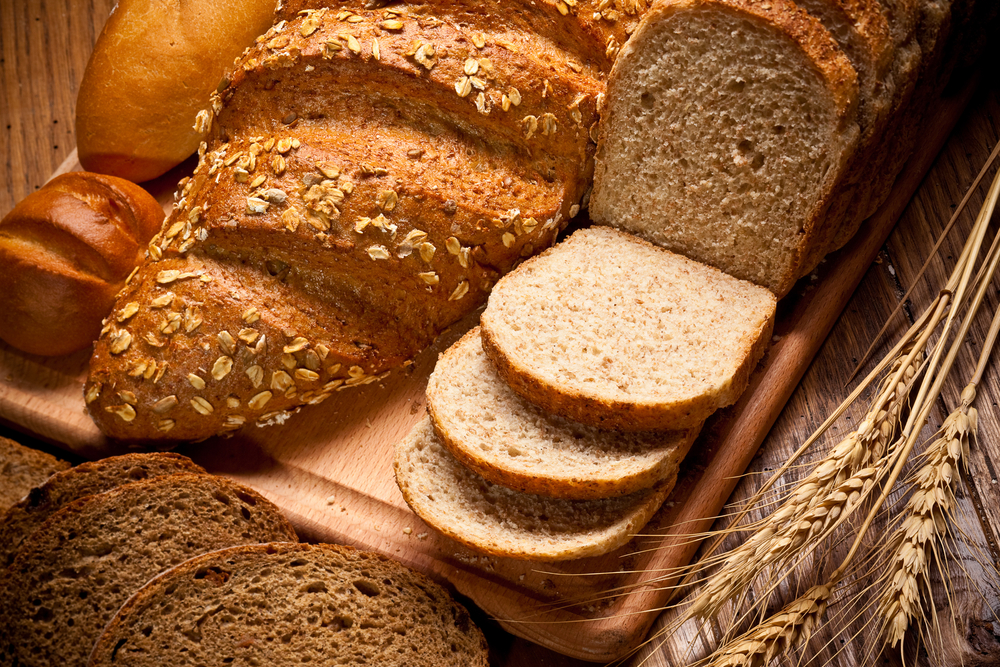==================
Affiliate Statement
Best Baking Tips is supported by our audience. When you purchase through one of our links, we may earn a small affiliate commission. As an Amazon Associate I earn from qualifying purchases. Your cost is not affected.
==================
Can I Freeze Bread Dough?
Have you ever asked, “Can I freeze bread dough?” Of course, you might know that it is possible. But do you know how to freeze bread dough?

fresh baked whole grain bread
We love freshly baked bread. That tell-tale aroma drifting from the kitchen calls us to want to cut into the loaf as it emerges from the oven. Indeed, nothing compares to that first slice of bread, coated with a slab of butter or perhaps a bit of jam. More than just satisfying, it brings us the warmth and comfort of a hug from a long-lost friend.
But baking bread means spending some time in the kitchen. We mix the dough ingredients, then knead it by hand or supervise our stand mixer as it kneads for us. Allow the rise, shape, a second rise before the oven finishes the task. The process usually takes 3-4 hours, factoring in preparation and clean-up times.
Of course, we know the end result is well worth the effort. No one doubts that. But to keep up with our needs, the process must be repeated in just a few days. Yes, our family and friends have enjoyed those loaves.
Would you like to save a little time, but still enjoy your homemade bread? Your freezer holds the key!
But, Can You Freeze Bread Dough?
Yes, you can. And it is just as wonderful when thawed and baked. Just like the first loaves baked the day you mixed the dough, these frozen loaves bring happiness to everyone’s tastebuds.
Can you just bake the bread, freeze it, and defrost it when you need it?
Yes, that works, too. However, our bread dough takes less space in your freezer (about half as much). And although it is delicious, it is not freshly baked. It is more like our baked bread, day 2. Very delicious, tender, flavorful, but lacking the day 1 quality. Ok, our home is not filled with the sweet aroma of bread baking, either.
And, you may give your friends a gift of frozen dough to bake fresh, too!
While most people cherish homemade bread, not everyone bakes their own. You might give a loaf of your fresh-out-of-the-oven bread to a friend. Or, give the gift of a frozen loaf, complete with finishing instructions. Imagine their family’s delight when they pull that loaf out of their own oven!
Ok, How do you freeze the dough?
You need to begin the process when you are mixing up your dough. As you know, yeast is alive. But freezing kills some, but not all, of the yeast in the dough. This requires you to plan ahead.
Use twice the yeast that your recipe calls for. And use only active dry yeast. The fast-acting yeast will not work for freezing your dough.
Using a silicone baking pan makes freezing bread dough simple!
Consider using pans, such as these from Amazon.
Steps for freezing your bread dough
Follow the recipe directions as if you are baking that day, except for the yeast adjustment. After kneading as directed, place in your oiled bowl and allow to rise, just as you normally would.
Continue the process by punching the dough down and shaping your loaves.
After the first rise, punch down the dough and knead. Then, shape the bread dough into a loaf or loaves.
At this point, we change procedures a bit.
Line a bread pan (one for each loaf) with plastic wrap or parchment paper. Spray with a nonstick baking spray. Put the loaf in the pan and place it in the freezer. Try to use the coldest part of your freezer for this stage.
Freeze for several hours or overnight. When frozen solid, remove the dough from the pans. Wrap it in the plastic wrap or parchment, then place it in a resealable freezer bag or a sturdy freezer container that seals tightly.
Be sure to label the container with the date and put it back into the freezer. You should plan to use it within a month, although some experts believe it will be very useful for weeks later, too. We find that the bread does not rise as well after about three months of storage. Experiment and see what works for you.
It’s frozen, Now what? Time to Bake!
Bread dough needs to go through two rises before baking. Your frozen bread has finished its first, but not the second. We recommend taking the dough out of your freezer the night before you plan to bake it. Place it in your refrigerator. This gives it time to defrost.
When you are ready to bake it, place your completely thawed dough in a greased bread pan, cover, and allow it to rise for its second rise. Bake according to your recipe.
Storage times for bread baked from frozen bread are similar to those for freshly baked bread. Plan to use your loaf within a few days. In fact, we like it best for the first two days, sometimes as long as three.

Pita bread sandwich
How do I freeze pita dough? pizza dough?
As with other yeast doughs, follow the directions for your recipe, adjusting only the yeast amount to double what your recipe calls for. Allow your dough to go through the first rise, then shape before freezing.
You might find that cutting your dough into smaller portions before freezing helps it to freeze quicker and also thaw more quickly. Simply wrap each piece separately before placing in your freezer bag or container.
If the dough is wrapped well and stored in the coldest part of your freezer, it should last several months.
When you’re ready to use your dough, defrost and put it through the second rise before baking as normal in the oven. Do not thaw your dough in a microwave oven, as the yeast can easily be killed.

Does the flour affect the way dough freezes and bakes?
It can. Freezing might alter the gluten structure of your dough. Since gluten makes for a good rise, poor gluten structure results in a flattened loaf.
Therefore, it’s best to use flour with a higher gluten content if you plan to freeze your bread dough. You might also consider adding 1-2 tablespoons of gluten flour in place of an equal amount of the flour your recipe calls for.
Our whole wheat pizza crust recipe freezes well. Consider trying it for your next baking day!
Some Final Advice
Saving time concerns everyone. Making extra bread ahead of time and freezing is one way to save time. You might also schedule actual baking days. This also helps keep your home more comfortable during the summer months.
Read More
How to Form a Loaf of Bread, Shaping





